When the first MIH watch was released more than a decade ago under the watchful eyes of Musée International d’Horlogerie curator Ludwig Oechslin, I don’t think anyone could have guessed what a success it would turn out to be.

The calm, cool, collected MIH Watch of 2005
Conceived by Oechslin and industrial designer Christian Gafner, crafted and adapted by Paul Gerber, sold through Embassy, and powered by a strongly modified Valjoux 7750, the limited-edition annual calendar watch sold for just a tick more than 5,500 Swiss francs.
And 700 Swiss francs from the sale of each watch went to projects earmarked by the museum. One of which was the restoration of the astronomical clock by Daniel Vachey, a 3,200-component masterpiece possessing every conceivable astronomical and mechanical function. Acquired by the museum in 2002, this restoration was documented in the four-volume book L’homme et le Temps.
Long sold out, the MIH watch continues to be sought after on the secondary market and revered for its clever minimalist functionality in a post-mechanical renaissance era of more is more.
Why a new MIH watch in 2019?
Despite the fact that Oechslin is no longer at the museum, the MIH’s current administration under curator Régis Huguenin and assistant curator Nathalie Marielloni decided to make a second creation in the same vein: the new MIH Gaïa Series I was developed by the museum’s own staff in conjunction with trusted local suppliers and artisans from La Chaux-de-Fonds.
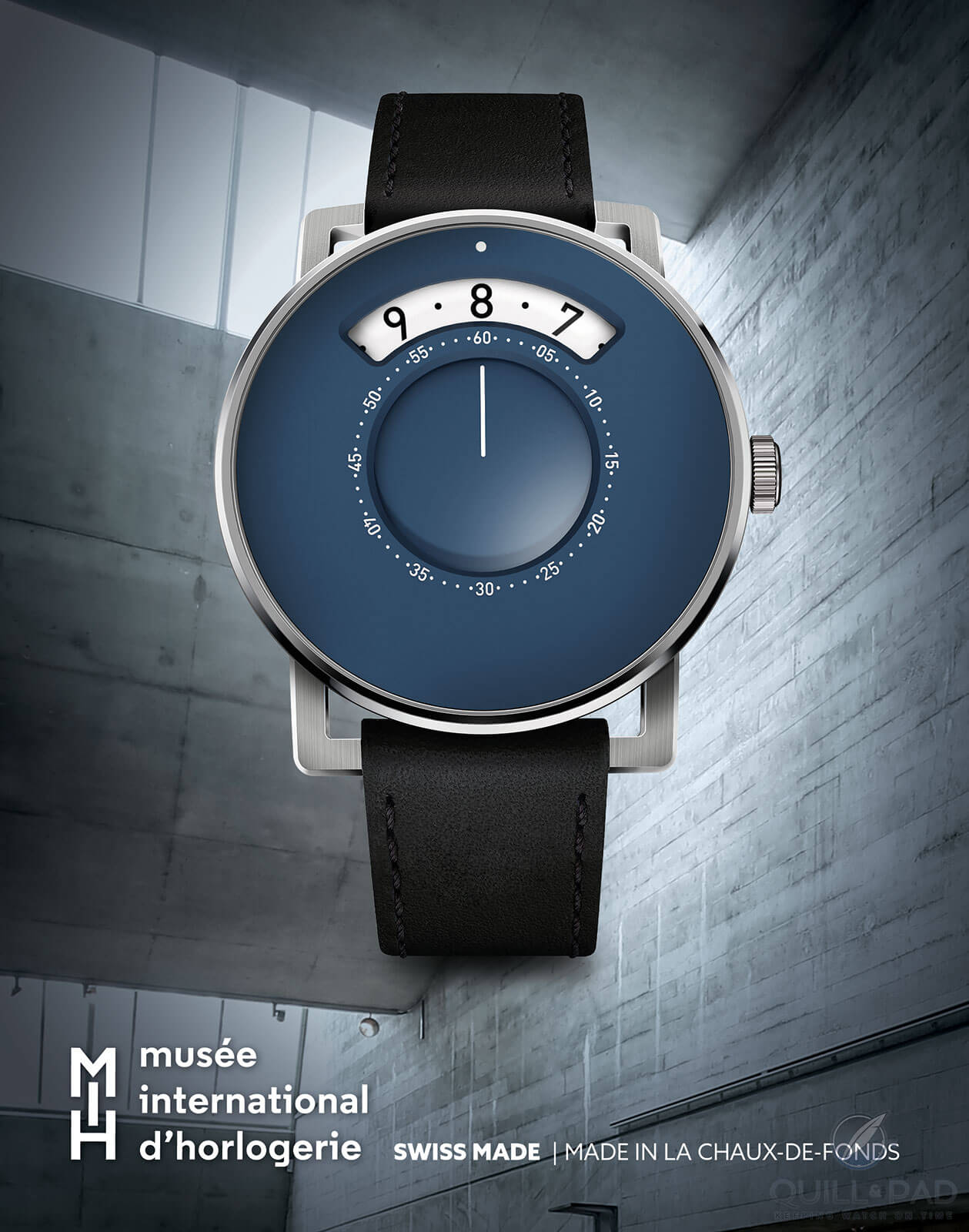
MIH Gaïa Series I Watch poster (photo courtesy MIH/R. Sterchi)
As with its predecessor, the new MIH Gaïa Series I was also called into existence to help finance ongoing museum projects as well as raise public awareness for safeguarding horological heritage (including the museum) and to promote the expertise of regional watchmakers.
The funds raised by the sale of the new MIH Gaïa Series I watch will focus on restoring the Grand Magicien, a clock with automaton crafted by Jean-David Maillardet and his son Julien-August in 1830, and the early nineteenth-century tellurium by François Ducommun. Both are found in the MIH’s collection.
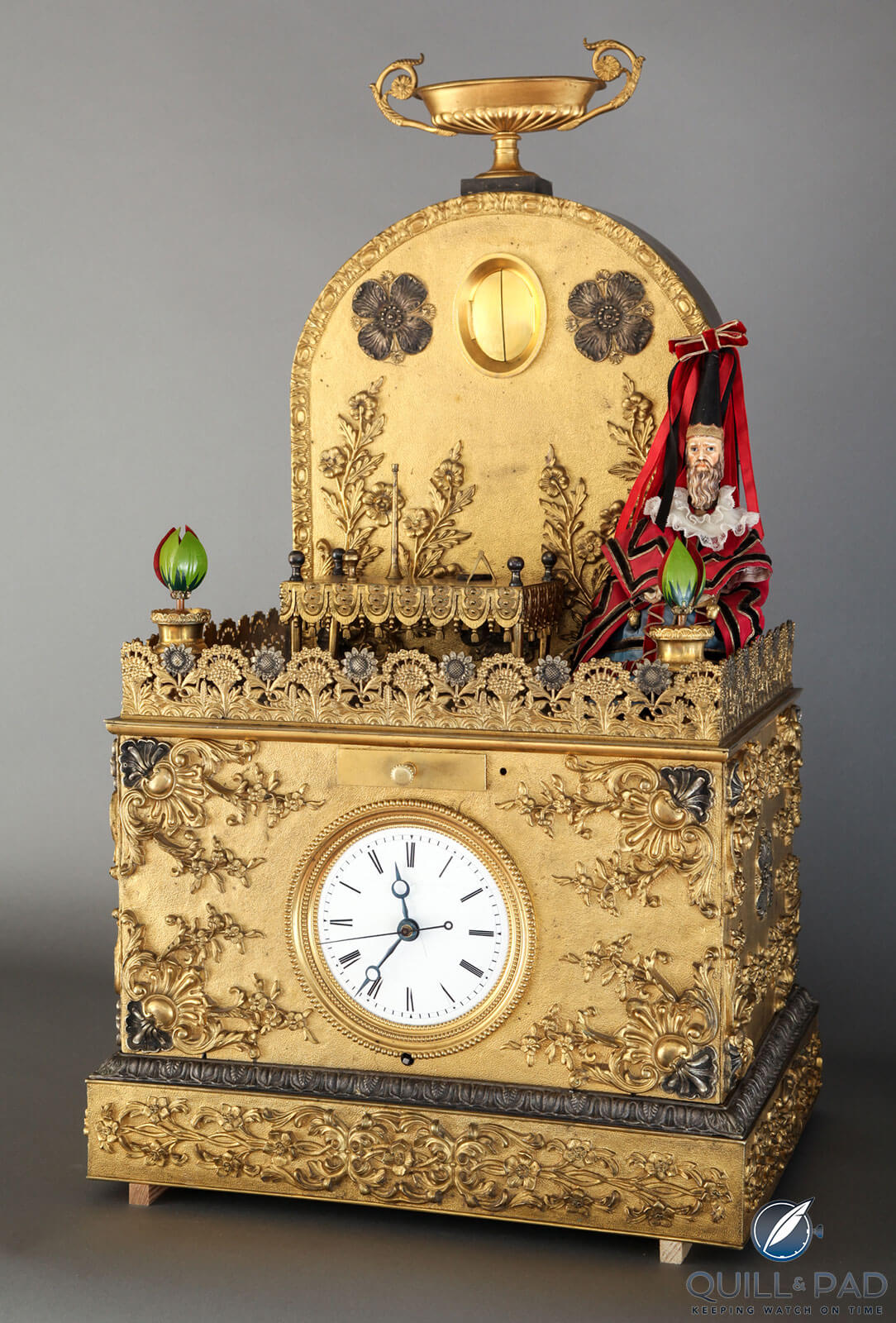
The Grand Magicien by Jean-David and Julien-August Maillardet is under restoration by the MIH
The new watch was named for the Gaïa award, which celebrates 25 years of its award ceremony in 2019. The Musée International d’Horlogerie in La Chaux-de-Fonds (MIH) created the Gaïa Award to honor the memory of one of the earliest patrons of the museum, Maurice Ditisheim. If the Grand Prix d’Horlogerie de Genève awards the horological Oscars, then the more cerebral Gaïa might be considered our horological Nobel Prize.
Inspiration behind the MIH Gaïa Series I watch
The looks of the new MIH watch have everything to do with the place in which it was created: its main design inspiration comes from the MIH museum building itself, a Brutalist concrete edifice with subterranean structure designed by Georges-Jacques Haefeli and Pierre Zoelly, who, when it was built in the early 1970s, described it as the first European experiment of contemporary “cave architecture.”
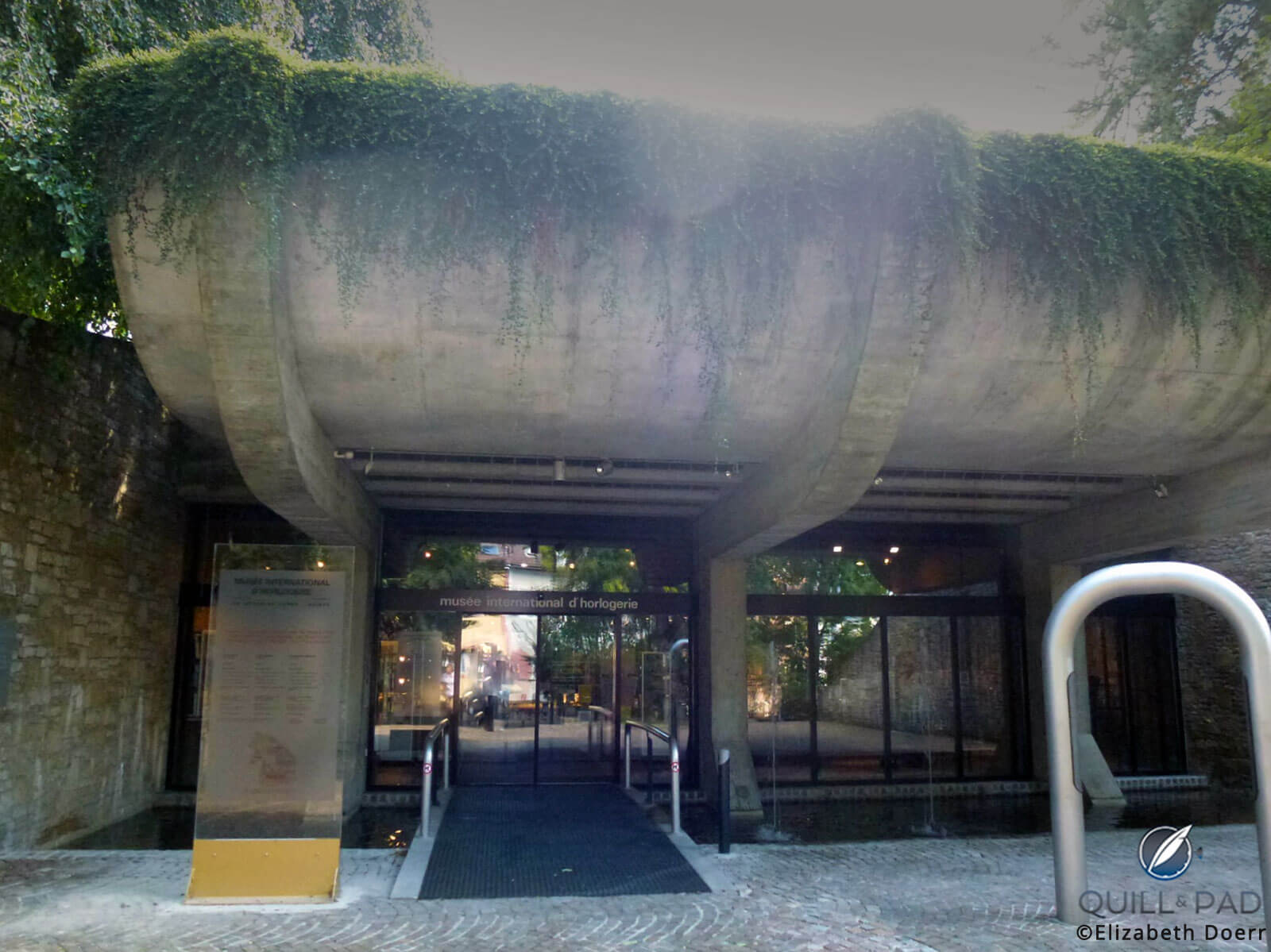
Entrance to the MIH museum in La Chaux-de-Fonds
Brutalist architecture, first associated with Swiss architect Le Corbusier – born, coincidentally, in La Chaux-de-Fonds – in the late 1940s, includes rough, unfinished surfaces and unusual, blocky, geometric and monolithic shapes.
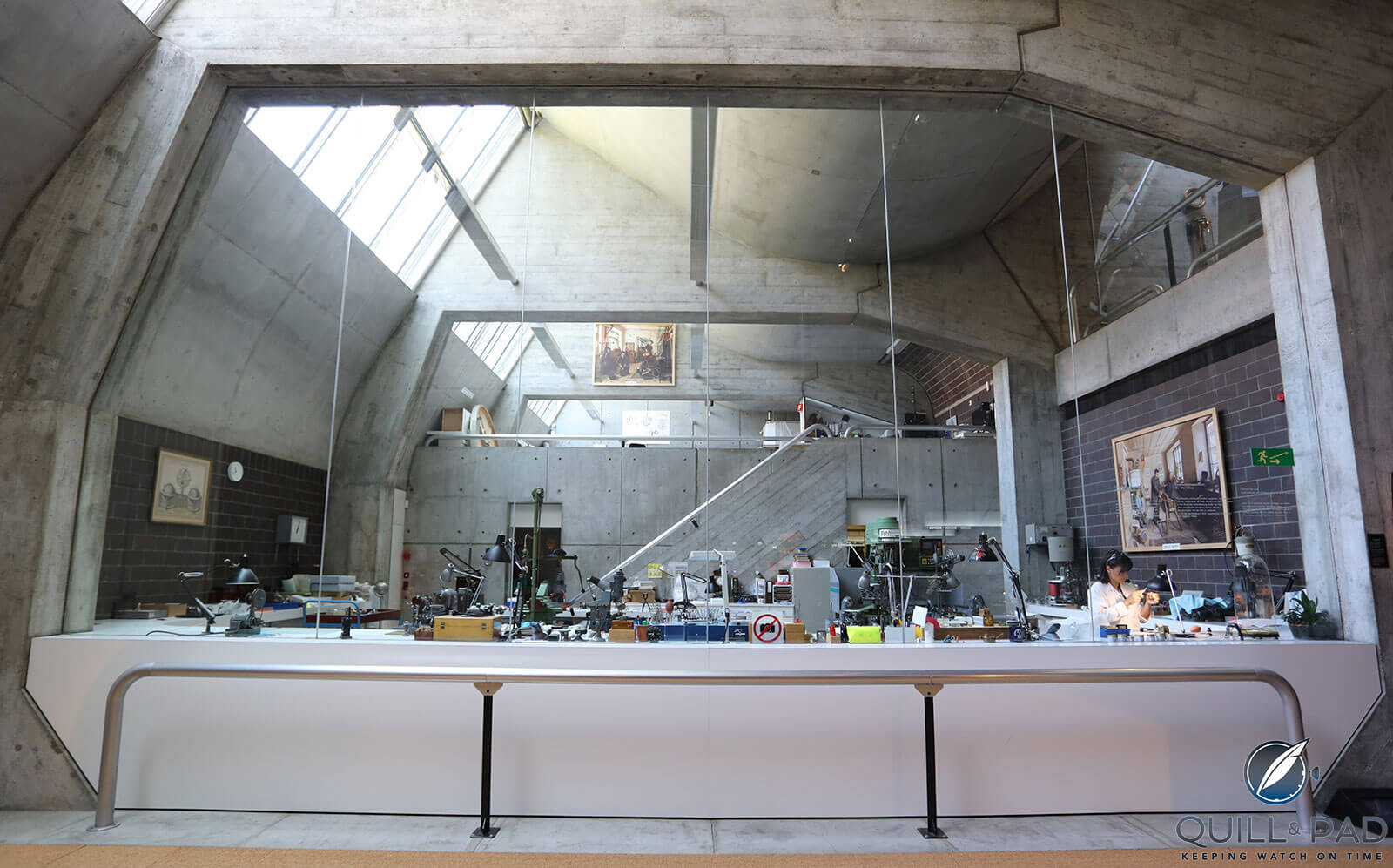
Restoration atelier at the MIH museum in La Chaux-de-Fonds
Raw concrete is often the prevalent material.
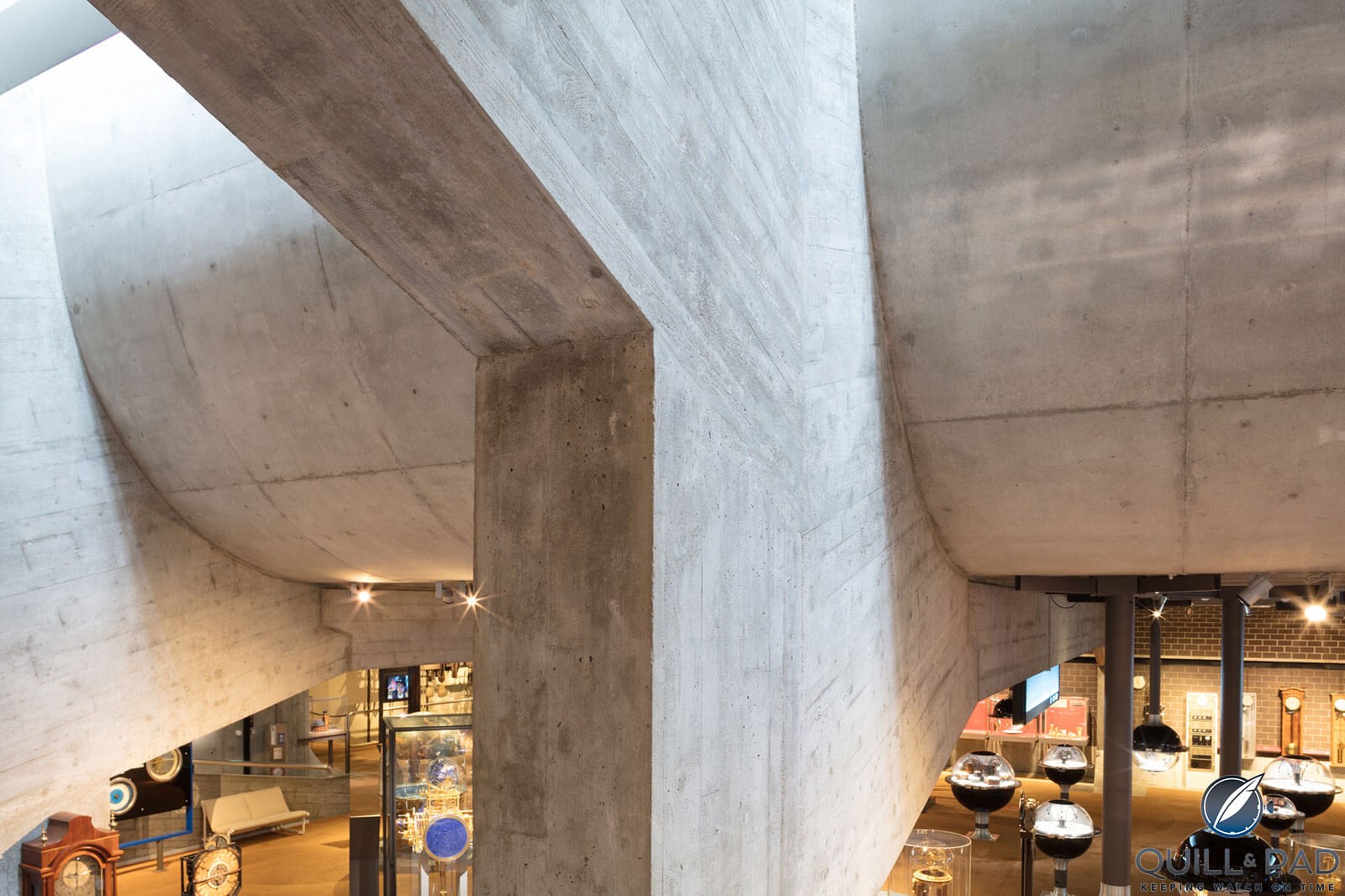
Architectural detail of the MIH museum in La Chaux-de-Fonds
The MIH building itself is surprising in its use of empty space, unadorned concrete, and light. And it is these elements that provided the exact inspiration for the watch’s case, which combines curves and straight lines.
The lugs of this watch reflect the concept perfectly.
The inspiration for the domed dial, though, is taken straight from the shape of the Gaïa trophy, a glass ball, in conjunction with the wide-open space of the building that is reflected in the empty spaces of the dial. The hours are indicated by a disk rather than a hand, while the minute hand is separate.
Paying homage to the Grand Magicien, the case back has a secret: it only reveals a glimpse of the rotor, which is engraved with the words “Musée International d’Horlogerie.” “MIH” is engraved on the crown, while the museum’s geographical coordinates are found on the strap buckle.
The design of this watch was crafted by Atelier XJC, a La Chaux-de-Fonds design studio specialized in art direction and product design, which was responsible for such timepieces as the Corum Bubble and vertical Titanium Bridge, as well as Hublot’s magnificent Baselworld booth. The MIH Gaïa Series I’s movement was supplied by Sellita, while Timeforge developed the technical plans. Century-old specialist Singer did the dial, while a firm called Stila crafted the case.
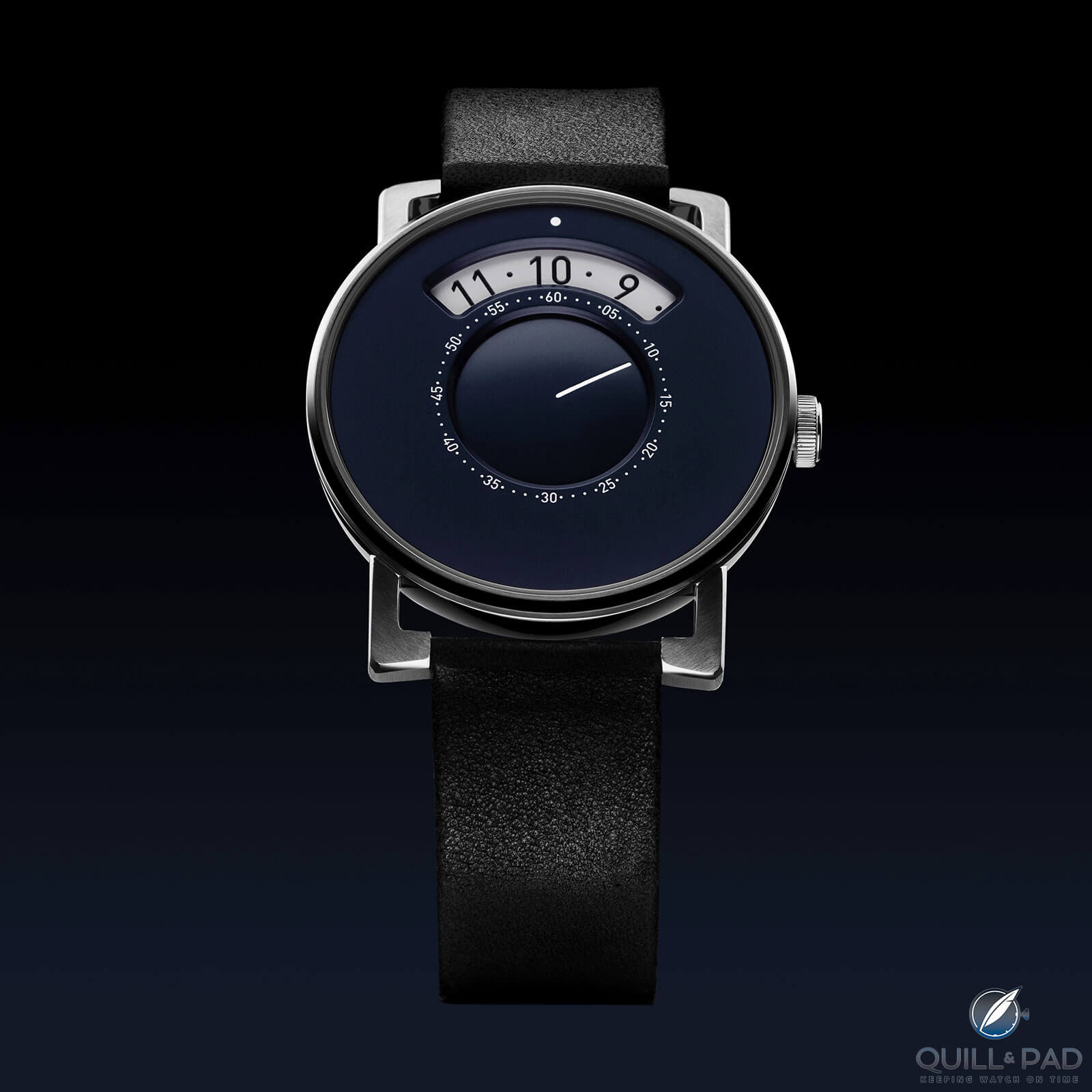
MIH Gaïa Series I Watch (photo courtesy MIH/R. Sterchi)
The watch is available to purchase on what is known as a souscription basis (order and pay first, receive when done). For the first few subscribers – the museum did not specify exactly how many – ordering between now and January 19, 2020, the MIH will offer a discount of 500 CHF. Once ordered, an initial payment of 1,000 CHF is taken with the balance of the 2,900-Swiss franc asking price taken upon delivery in mid-2020.
An initial series of 200 pieces with a blue dial – the corporate color of the MIH – is planned.
About the MIH and its proposed projects
The MIH, founded in its current form in 1974, is the world’s largest watch museum. Owning about 10,000 artifacts – only about 3,000 of which are on display at any given time – the museum aims to present the history of time measurement from its earliest beginnings to the present day.
The MIH not only exhibits horological artifacts, it also documents and researches its subject and restores antique pieces.
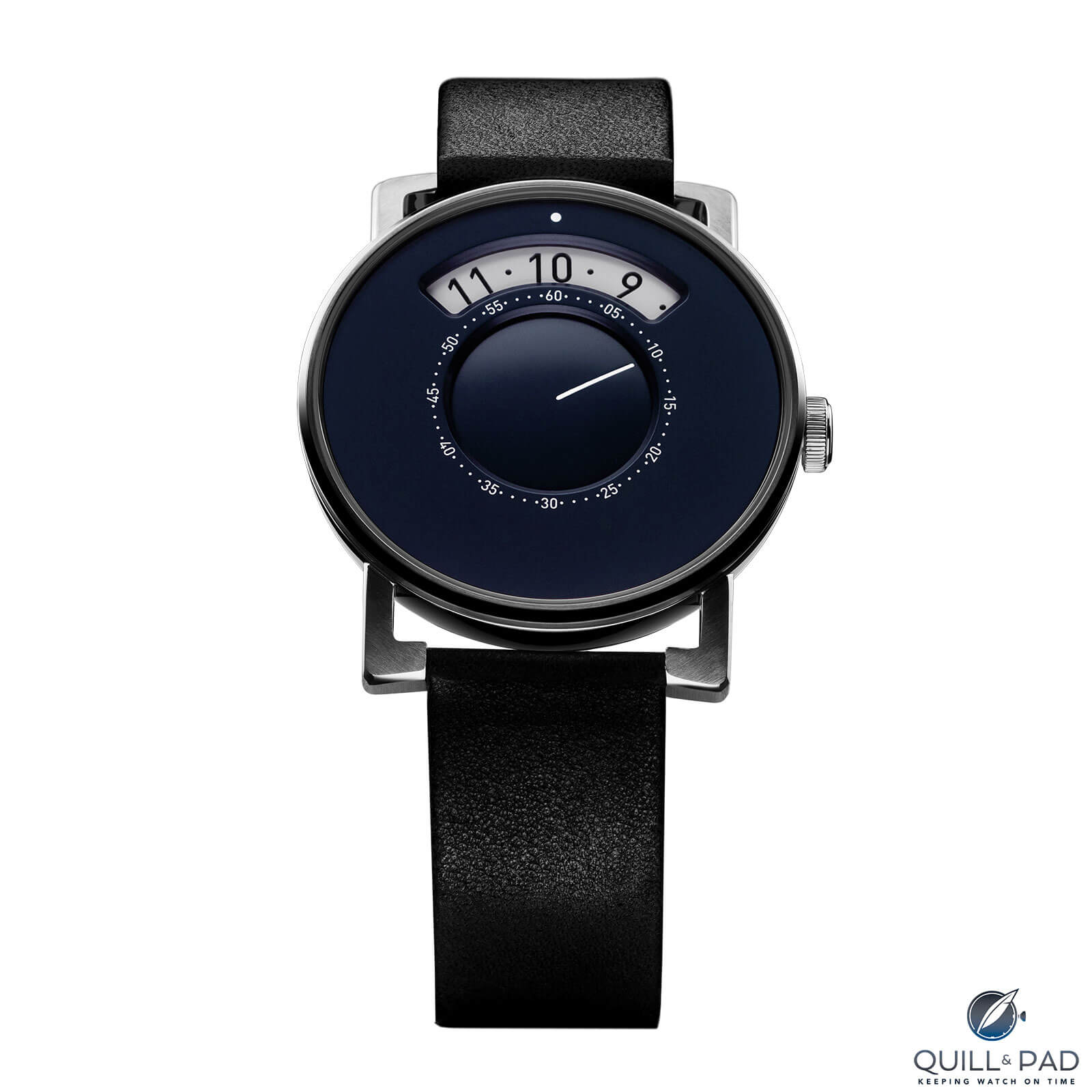
MIH Gaïa Series I Watch (photo courtesy MIH/R. Sterchi)
In addition to promoting the MIH, the funds generated by this new watch, as stated above, are earmarked to restore and document two 200-year-old works: the Grand Magicien by Jean-David and Julien-August Maillardet and François Ducommun’s early nineteenth-century tellurium.
The Maillardets created the Grand Magicien, a clock with a magician automaton, around 1830. The robe-wearing, wand-holding magician is seated at a table waiting for a Spanish-language question that may be inserted in the form of an oval plate into a drawer. The automaton reflects, stirs, stands up, looks at the questioner, gesticulates, and waves his wand. Then two shutters snap open and the answer appears. Meanwhile, two tulips open and close at the corners.
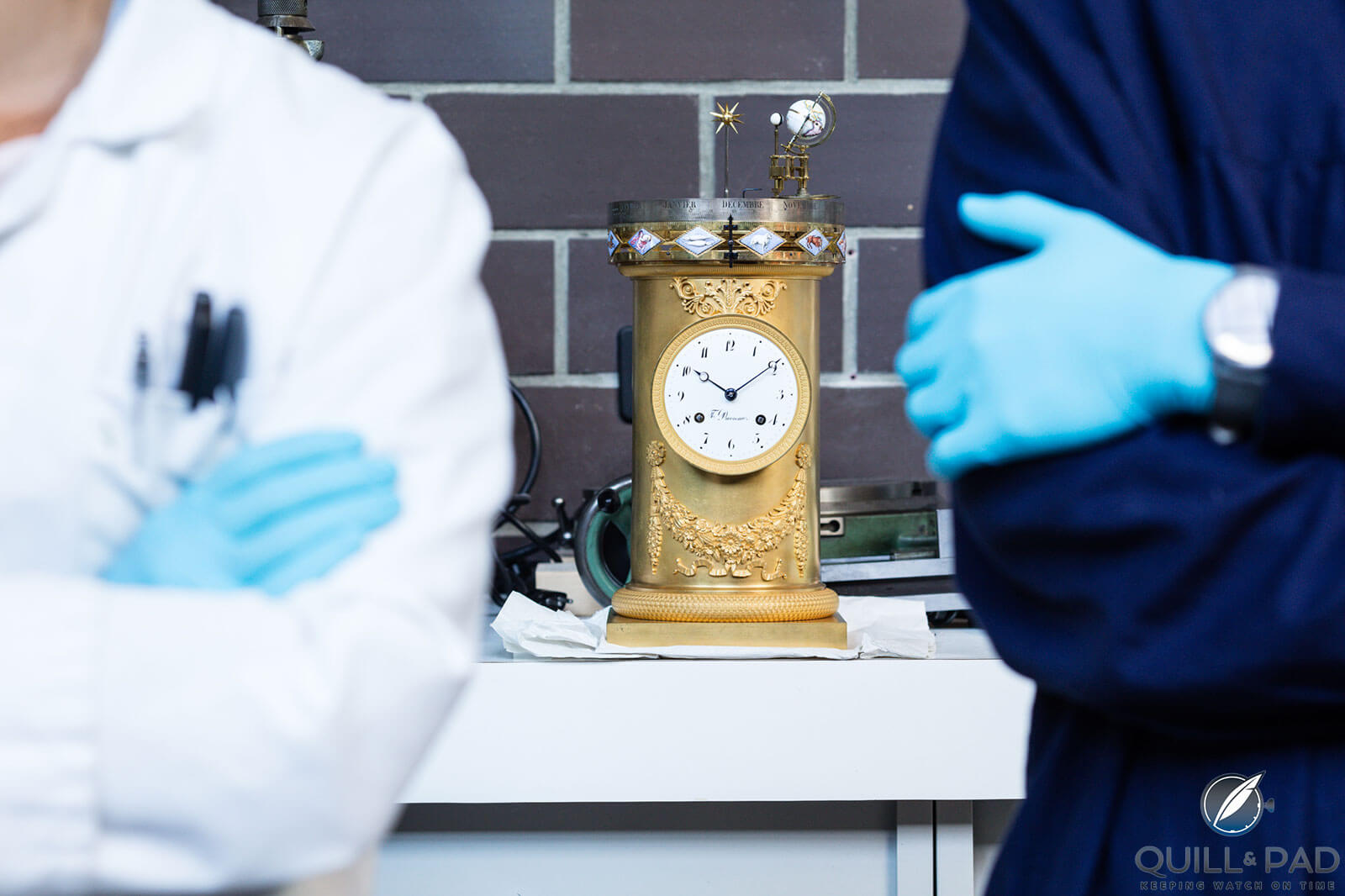
François Ducommun’s tellurium clock at the MIH museum
François Ducommun’s tellurium clock, an astronomical mechanism that represents the earth and moon revolving around the sun, has never been restored. Its clock has a recoil escapement and a quarterly chime.
For more information or to purchase, please visit www.montremih.ch.
Quick Facts MIH Gaïa Series I
Case: 39 x 9.74 mm, stainless steel
Movement: automatic Sellita Caliber SW400-1, 38-hour power reserve, 4 Hz/28,800 vph frequency
Functions: hours (disk), minutes
Limitation: initial run of 200 piece with blue dial
Price: CHF 2,500 until January 19, 2020; CHF 2,900 thereafter
You may also enjoy:
The 2018 Gaïa Awards: MB&F’s Maximilian Büsser, Reinhard Meis, And Bovet’s Paul Clementi Honored
The 2017 Gaïa Awards: Richard Mille, Jean-Marc Wiederrecht, And Laurence Marti Honored
The 2015 Gaïa Awards: Giulio Papi, Anita Porchet, And Jonathan Betts Honored
Kari Voutilainen Wins The 2014 Gaïa Award for Artisanal Creation
Ludwig Oechslin Retires As MIH (International Museum Of Horology) Curator And Director
Leave a Reply
Want to join the discussion?Feel free to contribute!





















































Clearly copied from the Goldpfeil watch from Vincent Calabrese…
I’m sorry, those two watches look nothing at all like each other. Are you referring to Calabrese’s (very different) use of windows in that watch?
Calabrese has also a round case, the hour also at noon and the minutes also in the center. He added a date at the six…
Can’t paste a picture here, but please google “Calabrese Goldpfeil” and then you will see.
Maybe you refer to the Goldpfeil watch from Vianney?
Yes, jumping hours with windows are around for a while, but I do not remember another jumping hour watch which has the minutes centered in a smaller disk displayed in an otherwise closed case (except for the windows) like the Goldpfeil.
There are plenty, and I do mean plenty. Here’s a good recent example: https://quillandpad.com/2017/08/24/icon-duesey-automotive-inspired-watch-interesting-wont-believe-created-car-designer/
That one does not have the circular minutes disk in the center, just another window for the minutes. You truly see a similarity in the minute display on the Dusey watch to the Goldpfeil or the Gaïa watch? I assume you refer to the closed case? That case together with similarity for the disk for the minutes and the hour window at 12 make the Goldpfeil and the Gaïa close cousins.
Those buildings constructed through brutalist architecture had certain critics who defined this kind of buildings as “piles of cement”. While others embraced the designs admiring their unique aesthetic appeal.